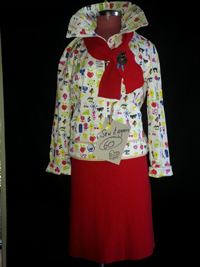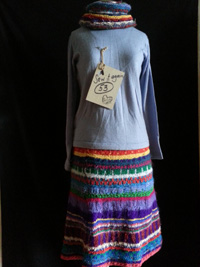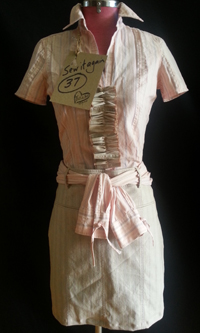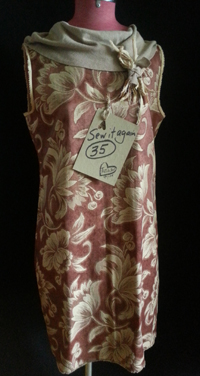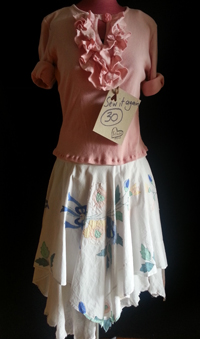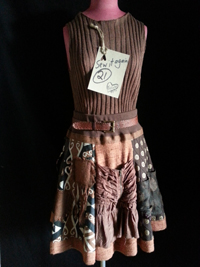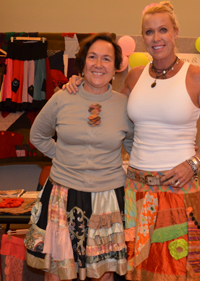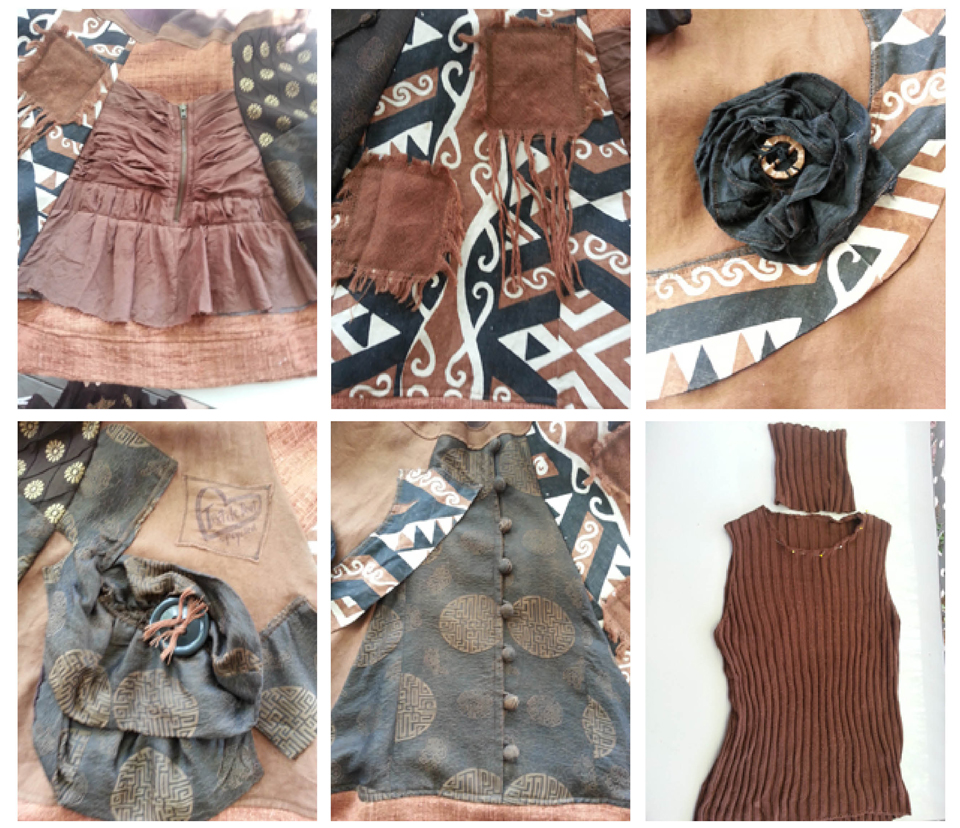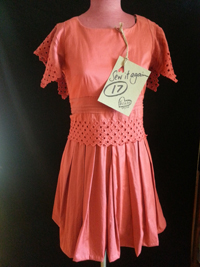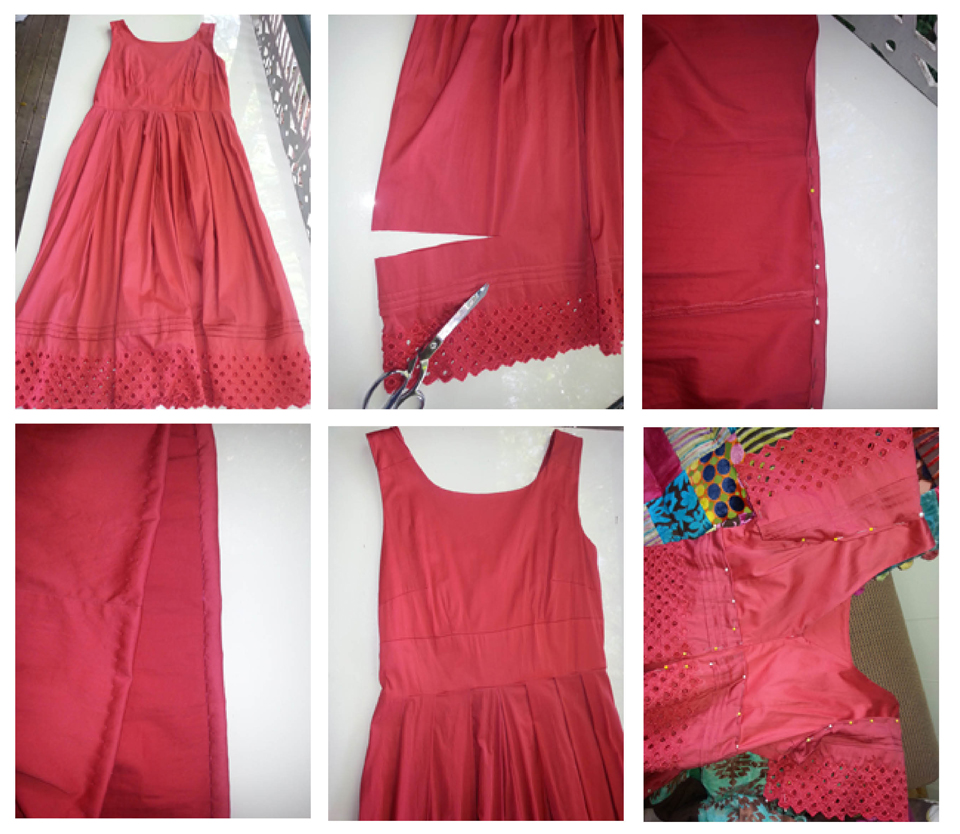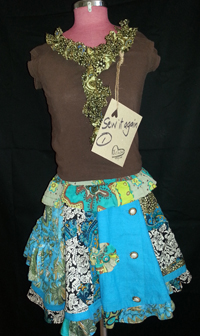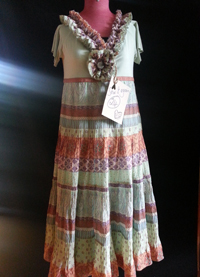 Here’s another long skirt that wasn’t being worn which I’ve turned into a dress by using part of a top which is embellished with a strip torn from the skirt hem.
Here’s another long skirt that wasn’t being worn which I’ve turned into a dress by using part of a top which is embellished with a strip torn from the skirt hem.
At my book club last night with fabulous, feisty, feminist, professional women I’ve been gathering with for more than a decade, I was thrilled to learn several are now dusting off their sewing machines and rediscovering the freedom of sewing.
In her book Sew Retro: a stylish history of the sewing revolution, Judi Ketteler writes about feminist history and women’s role in the home in the nineteenth century when everything was sewn by hand. Then in the twentieth century, women won the right to vote, cut our hair, ditched our corsets and joined the work force in earnest.
Ketteler says sewing was on its way out during the self-indulgent 1980s but is now making a huge comeback, thanks to a third wave of feminism that folded together ideas about DIY creativity, self-reliance, and eco-awareness.
“We don’t need stats to see the role that sewing now plays in so many women’s lives. Women carry their handmade bags to the grocery store, sport ‘upcycled’ denim skirts, and proudly give their handmade creations to friends and family. It’s a long way from 1941, but we’re still ‘sewing for victory’ – a victory over mass-produced, resource-greedy, uninspired, and cheaply made products. “
“We sew to support our families, to release tension from balancing work and family, to clothe the needy, to make a political statement, to celebrate a cancer survivor, to spoil our pets, to save a little money, to make our grandmothers proud, to teach our daughters how to think and live creatively, and just for pure, sweet pleasure.”
When Ketteler wrote this book in 2010, she said “sewing is about empowerment, creativity, sustainability, and sometimes sticking it to The Man. I can’t imagine a better place for sewing to have ended up.”
My Sew it Again project is not just about sewing, it is about re-sewing and demonstrating a different way of dressing. I am repurposing existing garments that have been discarded for various reasons and giving their gorgeous natural fibres a second chance at life.
Today’s offering was a Sportscraft skirt made of pretty printed silk-blend fabric which I merged with part of a stretch knit top to become a frock by sewing them together. The skirt is about 4m circumference at the bottom, and I tore a strip off it to shorten the skirt and provide a gathered feature around the neckline. To tear the strip, you begin with a small cut and then grip your thumb and forefinger close to the edges and tear. It is a satisfying action because you keep moving your hands along the fabric until you get to the other end. I sewed a gathering thread along the middle of this strip, pulled it up and pinned then sewed the strip around the front and back of the top, using the remainder to form a flower feature at the front.
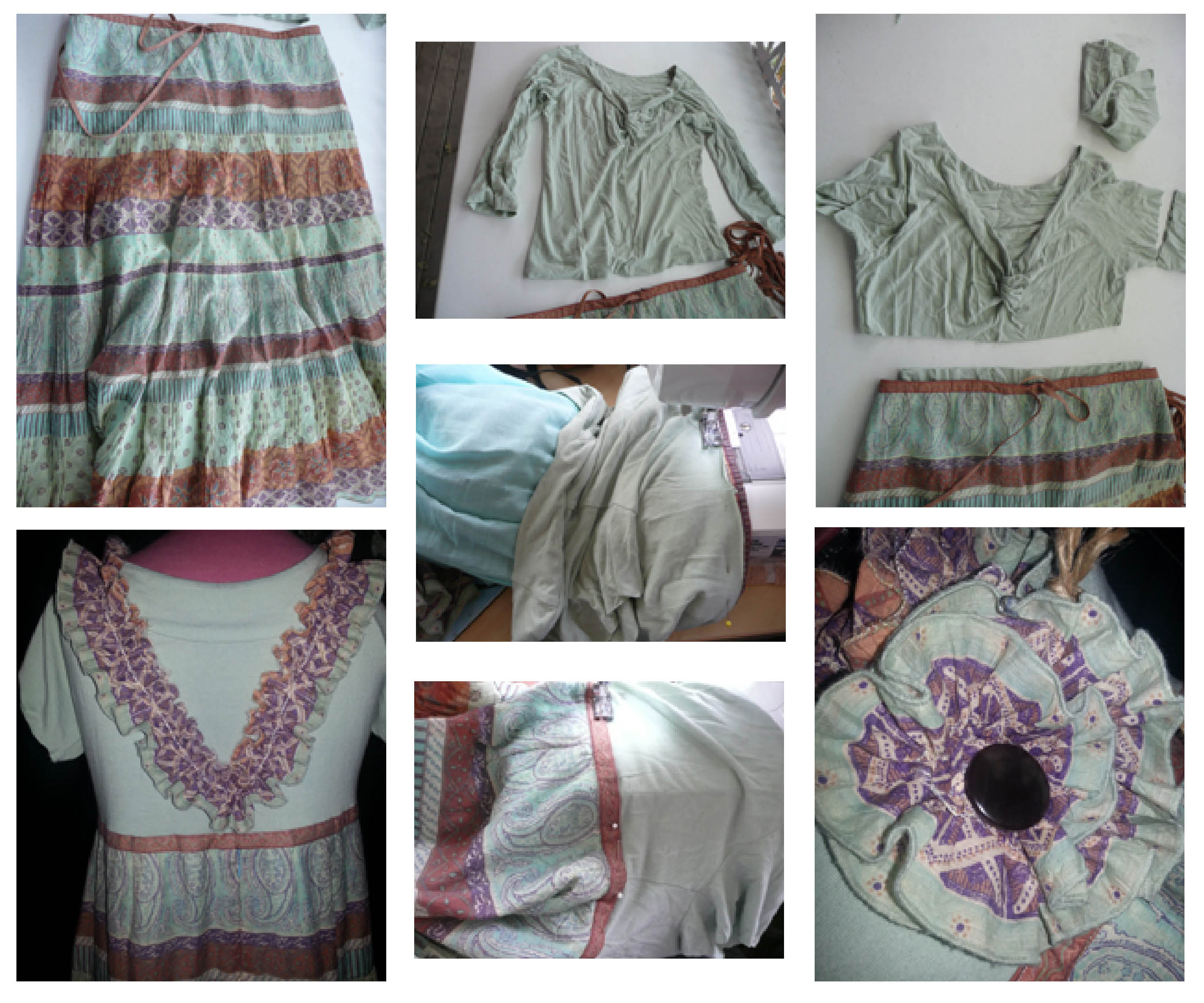
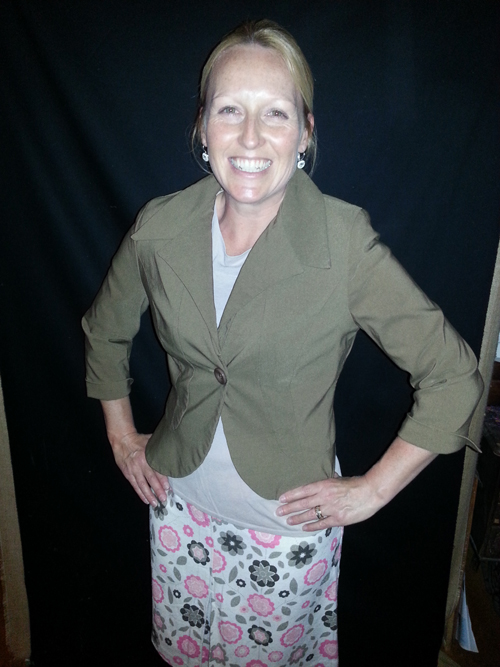 Individual tastes and preferences in the clothes we chose to wear each day are what set us apart. For those who want to be on-trend followers of fashion, there’s a $1.7 trillion global fashion industry catering to their needs.
Individual tastes and preferences in the clothes we chose to wear each day are what set us apart. For those who want to be on-trend followers of fashion, there’s a $1.7 trillion global fashion industry catering to their needs.